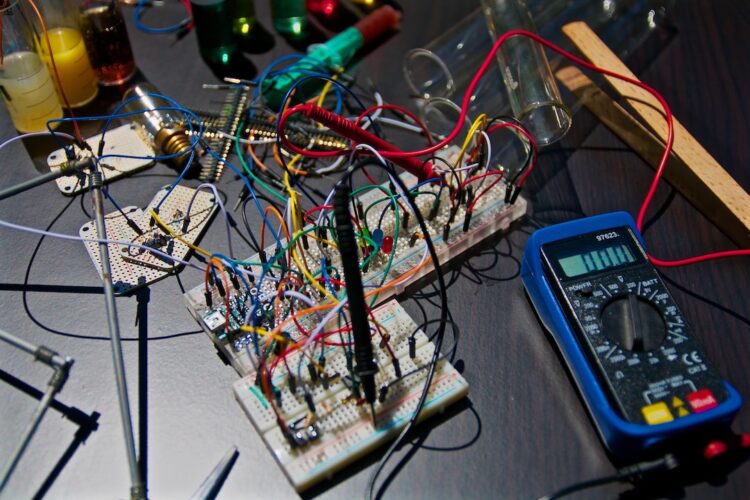Getting Started with Python Programming: A Beginner’s Guide
Python programming has gained widespread popularity in recent years due to its simplicity, versatility, and vast community support. Whether you are a complete beginner or an experienced programmer looking to learn a new language, Python is an excellent choice to start your journey into the world of coding. In this blog post, we will provide a comprehensive beginner’s guide to getting started with Python programming.
Why Python?
Before delving into the technical aspects of Python, it is crucial to understand why Python is the preferred programming language for beginners. Here are a few reasons why:
1. Simplicity: Python has a clean and readable syntax that makes it easy to understand and write code. This simplicity allows beginners to focus on solving problems rather than getting lost in complex language constructs.
2. Versatility: Python can be used for a wide range of applications such as web development, data analysis, machine learning, scientific computing, and more. Having such versatility in a programming language opens up endless possibilities for what you can create.
3. Large Community: Python has an extensive and active community of developers who contribute to its growth and provide support. This community-driven aspect ensures you will find solutions to problems you encounter along your coding journey.
Setting up the Development Environment
To begin programming in Python, you will need to set up a development environment on your computer. Here are the steps to get started:
1. Install Python: The first step is to install Python on your machine. Visit the official Python website (https://www.python.org/) and download the latest version of Python. Follow the installation instructions specific to your operating system.
2. Code Editor: Choose a code editor that suits your needs. Popular code editors for Python include Visual Studio Code, PyCharm, and Sublime Text. Install the code editor of your choice to start writing Python code.
3. Hello, World!: Once you have Python installed and a code editor set up, it’s time to write your first Python program. Open your code editor and write the following code:
“`python
print(“Hello, World!”)
“`
Save the file with a .py extension, such as `hello.py`. Open the terminal or command prompt, navigate to the directory where the file is located, and run the program by typing `python hello.py`. You should see the output “Hello, World!” displayed.
Learning the Basics
Now that you have executed your first Python program successfully, let’s explore the basics of Python programming.
1. Variables: Variables are used to store data in Python. You can assign values to variables using the `=` operator. For example:
“`python
name = “John”
age = 25
“`
2. Data Types: Python supports several built-in data types, including integers, floats, strings, lists, tuples, dictionaries, and more. Understanding these data types will help you manipulate and represent data effectively.
3. Control Flow: Control flow allows you to make decisions and repeat actions based on conditions. Key control flow constructs in Python include if-else statements, for loops, while loops, and functions.
Building Blocks of Python
As you progress in your Python programming journey, it is essential to familiarize yourself with the building blocks of Python:
1. Functions: Functions are reusable blocks of code used to perform specific tasks. You can define your own functions or use built-in functions provided by Python.
2. Modules: Python has a rich collection of libraries and modules that provide additional functionalities. Modules are pre-written code that can be imported into your programs using the `import` statement.
3. Error Handling: Python provides mechanisms to handle errors and exceptions during program execution. Understanding how to handle errors gracefully will make your programs more robust.
Expanding Your Knowledge
Once you have a solid grasp of the Python basics, it’s time to explore more advanced concepts and techniques. Here are a few areas to explore:
1. Object-Oriented Programming: Python supports object-oriented programming (OOP) principles, allowing you to create classes, objects, and inheritances. Understanding OOP will make your code more organized and reusable.
2. Libraries and Frameworks: Python boasts a vast ecosystem of libraries and frameworks that simplify complex tasks. Explore libraries such as NumPy, Pandas, and Matplotlib for data analysis, and frameworks like Django and Flask for web development.
3. Collaborate and Learn: Join online communities, forums, and coding platforms to interact with other Python enthusiasts. Sharing your code and collaborating with others will help you learn new techniques and gain valuable experience.
Conclusion
Python programming offers an excellent starting point for beginners due to its simplicity, versatility, and supportive community. By following this beginner’s guide, setting up your development environment, and learning the basics, you will be well on your way to becoming a proficient Python programmer.
Remember, programming is a journey that requires practice, persistence, and continuous learning. Embrace challenges, explore new concepts, and have fun while you embark on this exciting Python programming adventure!










